2004 Progress In The ARE's Search For Atlantis by Dr. Greg Little We didn't anticipate making as much progress as we did during 2004 in the ARE's Search For Atlantis Project, but a series of expeditions, events, and unexpected discoveries produced a host of findings that are very encouraging. There seems to be a genuine sense of expectation among those who have followed the Search For Atlantis Project. This is due to a series of 2004 events: 1) An ARE expedition to Cayce's elusive "Yucatan Hall of Records" site at Piedras Negras, Guatemala; 2) The important discovery made at Cerritos Island only last month by the project team; 3) Verification of finds at Andros and the coming National Geographic documentary; 4) A University of Leiden Physics Department computer expert discovering more toolmarks on the Andros Platform; 5) His linking of the Andros' toolmarks to Bimini, Yonaguni, and Peru; 6) Andrew Collins professing that he now leans toward the Bimini Road and Andros Platform as being manmade breakwaters; 7) Andrew Collins assessment of the ancient Portsmouth, Ohio earthworks—they do appear to depict Atlantis. 8) Depictions of the founder and "god" of the Maya culture, Itzamna, carrying tablets with him; 9) Andrew Collins linking of the Maya story of Votan to Piedras Negras. Brief Overview of Findings All of the 2004 findings are to presented in a video that will be presented at the ARE's annual Ancient Mysteries conference on October 8, 2004. In addition, a new video documentary on the 2004 findings, titled "The Yucatan Hall of Records" will be released on DVD at the conference. This DVD is the third in a series of video documentaries made on Cayce's Ancient Mysteries. The first of these was on Cayce's ideas about America's "Mound Builders" and the second was "The ARE's Search for Atlantis." The latter documentary has now been lengthened (to 73 minutes) and updated with 2004 findings and is exclusively on DVD at a much lower price. Here is a summary of what happened in 2004. 1. In April we (Lora & Greg Little) went to Guatemala visiting the National Archaeology Museum, Tikal, Yachilan, and Piedras Negras. At the museum we obtained extensive video footage of the major artifacts that have been discovered at Piedras Negras. Most Maya archaeologists concede that Piedras Negras has yielded that finest examples of Maya sculpture ever found and the footage of these is spectacular. Piedras Negras is the probable location of the third Hall of Records" spoken of in the Edgar Cayce readings. At Piedras Negras we found two probable entrances into what appears to be an extensive tunnel system. One of these truly fits Cayce's description of the location of the Yucatan Hall of Records. 2. In August, John and Doris Van Auken accompanied us to Cerritos Island, a little-known Maya port with a breakwater and seawall. The island is just off Yucatan and is dated by archaeologists to at least 300 BC, although a much earlier occupation is likely. The seawall, major structures on the island, and breakwater were all made of beachrock. The beachrock was cut into square and rectangular slabs and used for the various constructions. In brief, the beachrock at Cerritos is very similar to the stones comprising the Bimini Road and the Andros Platform. We also obtained numerous photos from Mediterranean breakwaters, made by the Phoenicians, all of which were constructed from cut and placed slabs of beachrock. Skeptics' arguments that the Bimini Road is just a natural formation of beachrock have never been proven, they have tested only a few blocks and have never compared them to the ancient Cerritos or the Mediterranean beachrock constructions. In short, an assessment of the geological arguments against the Bimini Road has been based on faulty science driven by preconceived ideas. The fact that they neither discuss nor compare known ancient beachrock constructions speaks for itself. 3. A 2004 expedition to Andros with a production team from the National Geographic revealed the following: In central Andros the earlier discovered "Temple Site" of 96-year old Samuel Rolle was verified as an ancient site. A deep cave, probably manmade, was found in the center of the formation (it yielded human artifacts) and stones used in the construction of ancient buildings were filmed; At the underwater Andros Platform we found several previously-unseen stone formations which look like steps up the structure. 4. Dr. Rudolph Zweistra of the University of Leiden's Physics Department discovered a host of toolmarks on our Andros Platform footage. Reviewing our video footage, especially that which was not put on the documentary, revealed several more square toolmarks. 5. Dr. Zweistra then found identical toolmarks on photos from the Bimini Road, the underwater structure at Yonaguni, and also on megalithic stones in Peru. 6. Andrew Collins, author of the bestseller, "Gateway to Atlantis," spent over 2 weeks in the US viewing a variety of evidence from Andros, Cerritos, and Bimini as well as from Cuba. Based on the current evidence, Collins now believes that both the Bimini Road and the Andros Platform were probably ancient harbor constructions. In addition, Cerritos may be an important link in Cayce's story of Iltar, the individual who established the Yucatan Hall of Records. 7. Collins was especially encouraged by a visit to the Portsmouth, Ohio earthworks, which was included in our book and documentary, "Mound Builders." Collins now believes, as we do, that this remarkable structure may well have been a depiction of Atlantis' central city exactly as described by Plato. He now leans toward the central city possibly lying in the Zapata swamps of Cuba, which we discovered in 2002 through the examination of high-resolution satellite images from NASA. A now-underwater island in Zapata has the exact dimensions described by Plato for the central city. 8. During 2004 we also interviewed John Van Auken for the documentary "The Yucatan Hall of Records." John described Cayce's story of Iltar establishing the Yucatan Hall of Records and linked him to the Maya founder, Itzamna. A deeper investigation of the Itzamna story revealed that he carried records with him on his "journey from the east" and carvings from Olmec sites depict their version of Itzamna (Kukulkan) as having stone tablets in his hands as he traveled. 9. During our filmed interviews with Andrew Collins, he described the story of Votan, the Maya founder god in the Guatemalan highlands and Peten regions. Votan came from an island in the east (already clearly identified as Cuba) in ancient times bringing along written records. He arrived at the coast of Yucatan (possibly Cerritos) and then went north. At the first navigable river (the Usumacinta) he went upstream for a long distance. After reaching a suitable location, he stopped and constructed the first settlement. This location has generally been, according to Collins, assumed to be Palenque, but Palenque isn't accessible from the Usumacinta River. In brief, Collins asserts that Piedras Negras is a likely location for Votan's first settlement and he adds that Piedras Negras may well be an outpost of Atlantis. In sum, we do believe that substantial progress has been made in 2004 and plan to continue and expand the search in 2005. There are several areas along the lower Gulf Stream we plan to carefully investigate as well as visiting other sites, which appear to be beachrock breakwater formations. Other expeditions to Andros are also planned. Finally, when and if Cuba becomes accessible, we will investigate the Zapata swamps. | ||||||||||||||||||
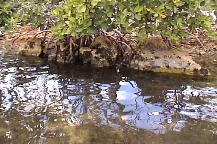 | ||||||||||||||||||
Cerritos seawall made from beachrock | ||||||||||||||||||
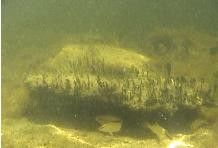 | ||||||||||||||||||
Cerritos breakwater beachrock | ||||||||||||||||||
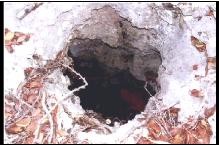 | ||||||||||||||||||
Cave at Andros Temple site | ||||||||||||||||||
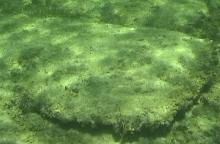 | ||||||||||||||||||
Andros Platform stones | ||||||||||||||||||
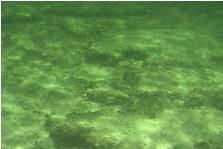 | ||||||||||||||||||
Steps Up Andros Platform | ||||||||||||||||||
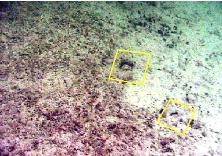 | ||||||||||||||||||
Toolmarks on Andros Platform | ||||||||||||||||||
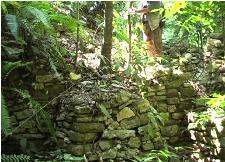 | ||||||||||||||||||
Possible location of Yucatan Hall of Records | ||||||||||||||||||
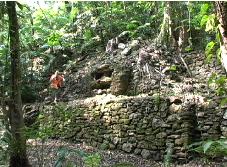 | ||||||||||||||||||
Pyramid K-5 at Piedras Negras | ||||||||||||||||||
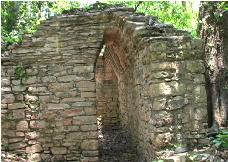 | ||||||||||||||||||
Structure on Piedras Negras acropolis | ||||||||||||||||||
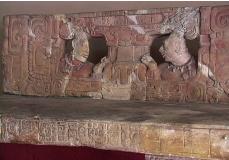 | ||||||||||||||||||
Carved throne from Piedras Negras | ||||||||||||||||||
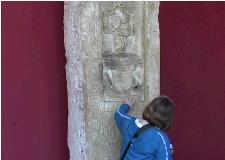 | ||||||||||||||||||
Stella from Piedras Negras | ||||||||||||||||||
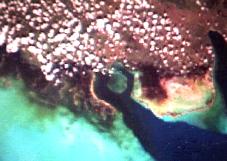 | ||||||||||||||||||
NASA image-Zapata, Cuba | ||